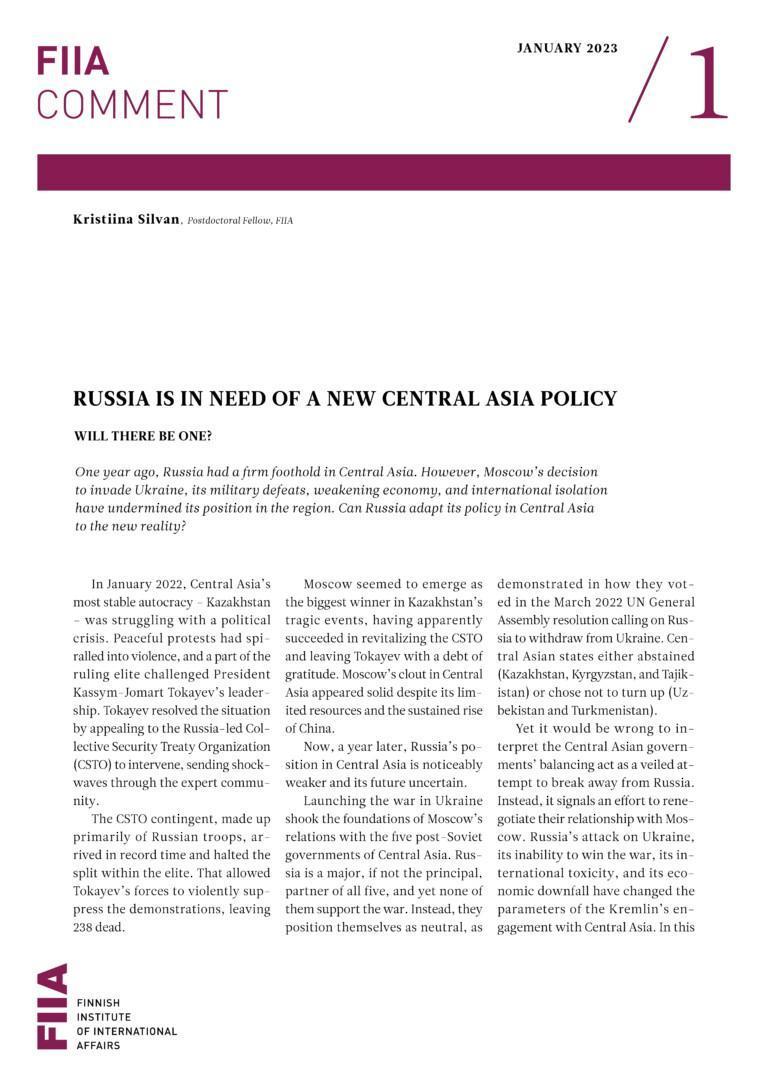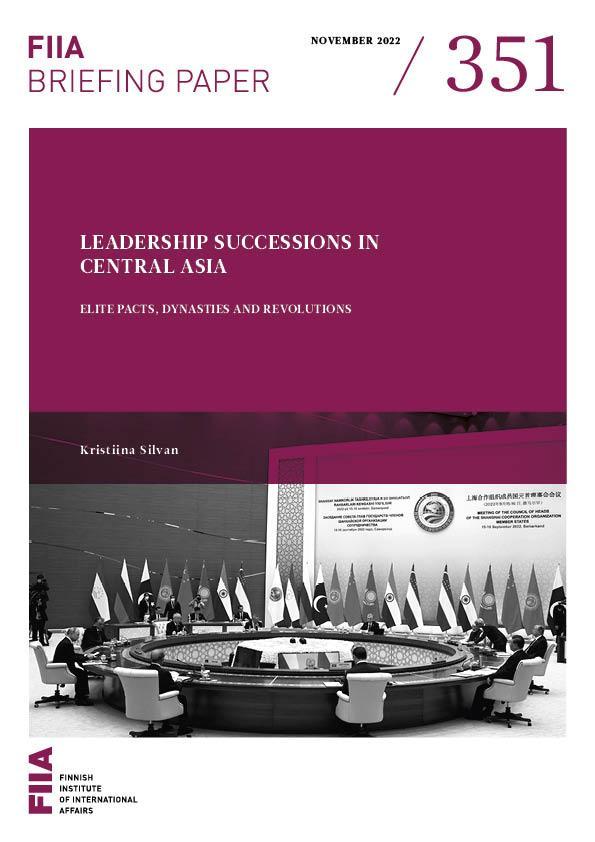
The Kyrgyzstan-Tajikistan border delimitation agreement, reached without explicit external mediation, has the potential to pacify one of the most problematic sites of conflict in Central Asia. The deal opens avenues for increased cooperation and integration among the states in the region, something that the West has been encouraging for years.
On 31 March, the first trilateral summit of the leaders of Kyrgyzstan, Uzbekistan and Tajikistan will take place in the city of Khujand, Tajikistan. The event is of historical importance not because it is the first of its kind, but because it follows the signing of the final protocol on the delimitation of the long-disputed Kyrgyz-Tajik border. Delimitation establishes the border between Kyrgyzstan and Tajikistan in law and will be followed by a process of demarcation, the physical marking of the boundary on the ground.
Kyrgyzstan and Tajikistan both gained independence following the collapse of the Soviet Union. Their shared 972-kilometre border had been arbitrarily drawn and redrawn numerous times in the Soviet era, contributing to its perceived illegitimacy since 1991. In addition, Kyrgyz, Tajik, and Uzbek communities live side by side in a checkerboard pattern in the densely populated Ferghana Valley. This has made it impossible to establish state borders based on ethnicity. Despite negotiations, a significant part of all three borders – Kyrgyz-Uzbek, Kyrgyz-Tajik, and Uzbek-Tajik – had remained disputed.
After a change in Uzbekistan’s leadership in 2016, Tashkent successfully demarcated the country’s borders with both Kyrgyzstan and Tajikistan. In contrast, conflicts along the Kyrgyz-Tajik border grew more intense. Although both Kyrgyzstan and Tajikistan were members of the Russia-led Collective Security Treaty Organization (CSTO), this did not prevent escalation. Frequent local clashes over access to pastureland and water escalated into battles verging on full-scale interstate war in 2021 and 2022. Offers of mediation by regional and global actors were declined, and the border was sealed.
For years, if not decades, Western capitals have persistently nudged Central Asian states towards increased cooperation with each other in the hope that regional integration could enhance the region’s prosperity, security, and stability. At the same time, Central Asian regionalism has had very few local proponents. All regional integration has been led by external actors, first and foremost Russia, through formal organisations like the Eurasian Economic Union and its predecessors in the economic sphere. Meanwhile, Central Asian governments’ participation in such initiatives has been primarily motivated by their interest in strengthening relationships with actors beyond the region, not within it.
However, about a decade ago, Central Asian leaders began to shift their gaze from the surrounding powers towards their immediate neighbours. Much of the credit for this should go to Uzbekistan’s President Shavkat Mirziyoyev, who has endorsed a distinctively collaborative approach vis-à-visCentral Asian capitals. By the early 2020s, the contentious Kyrgyz-Tajik relationship had become the exception rather than the rule in regional politics.
As the presidents of Kyrgyzstan and Tajikistan embraced in front of the cameras in March 2025, it was clear that Mirziyoyev’s ‘good neighbourliness’ had spread beyond Uzbekistan’s borders.
Paradoxically, the success of the Kyrgyz-Tajik border delimitation is connected to the consolidation of authoritarianism in President Sadyr Japarov’s Kyrgyzstan. Previously, any agreement that entailed land swaps was thwarted by resistance from local communities, limiting Bishkek’s deal-making willingness and capacity. However, the successful conclusion of the Kyrgyz-Uzbek border deal in 2022 was a sign that the political situation had changed due to the Japarov regime’s growing authoritarianism. The Kyrgyz-Uzbek border agreement faced fierce resistance from residents of border communities, civil society activists, and the political opposition, but Japarov managed to silence his critics by force.
In Tajikistan, President Rakhmon’s newfound willingness to make a border deal with Kyrgyzstan is most likely explained by his authoritarian succession planning. For years, Rakhmon has been preparing to hand over power to his son, Rustam Emomali. Minimizing the possibility of conflict on Tajikistan’s external border at the delicate moment of succession is intended to facilitate the power transfer. In addition, opening the border would have a positive effect on Tajikistan’s economy.
The Kyrgyz-Tajik border delimitation agreement demonstrates that Central Asia’s autocratic leaders are capable of finding a way out of extremely thorny issues. That said, the distinctively authoritarian method of negotiation may have proven successful in the short term, but its medium- to long-term effects remain to be seen.
So far, the agreement exists only on paper. The subsequent border demarcation phase will involve not only the establishment of the border on the ground, but also a painful process of population resettlement. Resistance on the ground could catch the authorities off guard and escalate into a nationwide protest movement, especially in Kyrgyzstan. Implementing the agreement will require multi-level inter-state collaboration for resource management. Given the lack of such experience, rampant corruption, and shortcomings in communication, ensuring success on the ground may prove challenging for both governments.
The Kyrgyz-Tajik border delimitation agreement is only the first step towards lasting peace in the Ferghana Valley. Yet the fact that it has been concluded suggests that Central Asia may be on the road to accelerating regional integration. This is a positive development in view of the challenges facing the region. Managing limited resources, improving transportation efficiency, and combating drug trafficking are all issues that can only be fully addressed by coordinating policies with neighbouring states.







